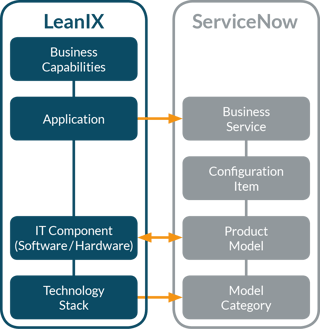 "I have no special talent, I am only passionately curious," Albert Einstein said once. He wanted to express that curiosity is crucial for understanding highly complex topics. If you are curious, you strive to understand things, exchange ideas and discuss methods of resolution with others. Thus the exchange of information is an indispensable characteristic for intelligence. The exchange of ideas is indespensible for conferences, just as it is for LeanIX: It is all coming together at the ServiceNow® conference Knowledge17.
"I have no special talent, I am only passionately curious," Albert Einstein said once. He wanted to express that curiosity is crucial for understanding highly complex topics. If you are curious, you strive to understand things, exchange ideas and discuss methods of resolution with others. Thus the exchange of information is an indispensable characteristic for intelligence. The exchange of ideas is indespensible for conferences, just as it is for LeanIX: It is all coming together at the ServiceNow® conference Knowledge17.
Now I'm curious…
To ensure an efficient exchange, transparency is essential. However, the lack of transparency is often the problem in the field of operational technology at application level. Lifecycle information for IT components is available in the IT service management (ITSM) and is maintained there. But the effect of the technology lifecycle on applications is uncertain. However, information on applications, processes, users and business knowledge is available in the application portfolio. Information is therefore only partially available on both ends – there is a missing link.LeanIX and ServiceNow have the solution. The Enterprise Architects’ job is to plan the technology roadmap and to define the corresponding standards. But things often get stuck in the planning stage because the link to operations is missing. Enterprise Architects use other terms for applications and technologies, some of which are abstracted from the components that are actually installed. This often makes cooperation impossible, meaning that there is a significant risk the right decisions will not to be made and implemented neither on the strategic nor the operative side.
Between both worlds: the "LeanIX ServiceNow" integration
The ServiceNow platform focuses on operations, whereas LeanIX facilitates strategic decisions. The LeanIX-ServiceNow integration translates between both realms and aligns the various concepts. This way, you automatically enrich your application portfolio with data, ensuring that all important and strategic information is properly integrated into ITSM.At Knowledge17 from 7 to 11 May in Orlando, LeanIX will present the joint solution as a sponsor of the event . Social technologies make it possible to increase staff productivity by 25%. By effectively sharing knowledge, you can gain an edge over 75% of your competitors. LeanIX easily simplifies collaboration between all employees in the relevant context. Thanks to information synchronization, the same up-to-date data is available in LeanIX and ServiceNow.
Intelligent exchange
Applications are planned and set up in LeanIX and then transferred to ServiceNow, where they function as a business service to establish the ITSM framework. The experts on the ServiceNow side use configuration items to create the link to the product model. This link is mirrored on the LeanIX side between applications and IT components. Using the lifecycle information which is transferred over, it is possible to represent the technology risk on the application level. The Enterprise Architects plan technology standards in LeanIX, which are then available to the ITSM team in ServiceNow.




